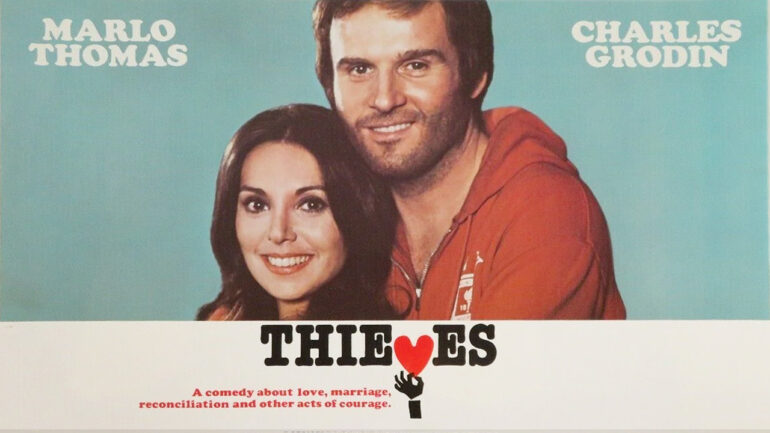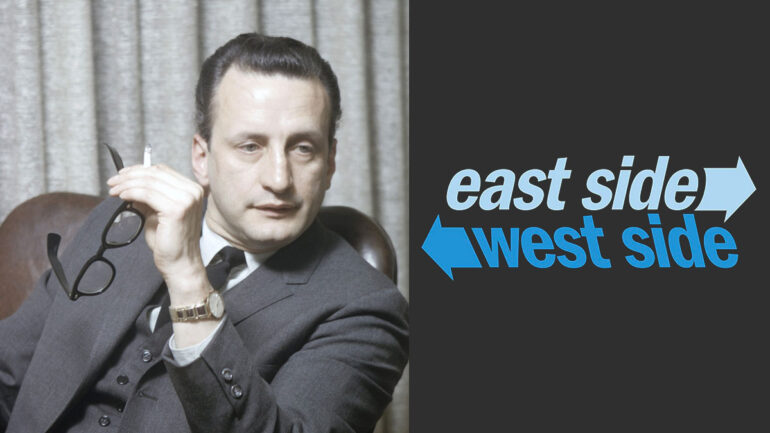This New York-born son of a Polish immigrant began performing in public at the tender age of four. Before he hit his teen years, John Berry (ne Jak Szold) became a regular comic on the vaudeville circuit and at age 20 joined Orson Welles' Mercury Theater, acting in the troupe's productions of "Julius Caesar" (the now legendary modern-dress staging) and "Five Kings." He went on to serve as stage manager of the company and when Welles decamped to Hollywood, assumed the position of manager.
In 1944, Berry was brought to Hollywood by the head of Paramount and soon was apprenticing with Billy Wilder on the now classic "Double Indemnity." The following year, he made his feature directorial debut on "Miss Susie Slagel's," when former Mercury Theatre cohort John Houseman tapped him to replace Harold Clurman. Berry became noted for his ability to coax fine performances from his actors and earned a reputation as a visual stylist with such films as the shot-on-location romance "From This Day Forward" (1946), the Richard Basehart thriller "Tension" (1949), and John Garfield's last film, "He Ran All the Way" (1951).
Around the time of the latter, Berry was cited as a member of the Communist party by director Edward Dmytryk, who after having been blacklisted in 1948 and jailed on several occasions, admitted to his past membership and agreed to "name names." As a result, Berry fled Hollywood and settled in France, although by his own admission, he thought he would only be out of the USA for a few months. In fact, he and Garfield had planned to reteam on "The Man With the Golden Arm" but Garfield died in May 1952 and Berry remained in Europe for over a decade. During this period, the six films he made were of varying quality, the best of which may be the period comedy "Pantaloons/Don Juan" (1956) and 1957's underrated "Tamango" (released in the USA in 1959), co-written by Lee Gold, Tamara Hovey and Berry. A drama that graphically portrayed the horrors of slavery, "Tamango" was perhaps ahead of its time in its tackling such big themes. At its release, critics tended to harp on its depiction of miscegenation (Dorothy Dandridge played the mistress of slave ship captain Curt Jurgens) and overlooked the more salient points of the drama.
While the blacklist was slowly eroding in the early 1960s, Berry was concentrating on other outlets, like teaching acting at the Sorbonne (where his students included Sam Waterston) and directing plays in London. Beginning in 1962, he began an affiliation with South African playwright Athol Fugard by staging the latter's two character drama "The Blood Knot." After starring in and directing "The Secret of the World" in London, Berry returned to the USA in 1964 to direct the Off-Broadway premiere of "The Blood Knot," starring James Earl Jones. While in New York, he also directed episodes of the George C Scott TV series "East Side/West Side" (CBS). He and Jones would later reunite to work on another Fugard drama "Boesman and Lena" (1970).
By this time the full effects of the blacklist had lifted and Berry had resumed his US feature career with "Maya" (1966), a poorly received jungle adventure partly designed to capitalize on the popularity of its young stars (Jay North and Sajid Kahn). It would be eight years before Berry finally had some success in the US film market with "Claudine" (1974), the upbeat dramatic saga of a family on welfare that co-starred James Earl Jones and brought Diahann Carroll a Best Actress Oscar nomination. Subsequent output, like the film adaptation of Herb Gardner's comedy "Thieves" (1977) and "The Bad News Bears Go to Japan" (1978), were of less quality. Turning to the small screen, Berry helmed the unsold pilot "Sparrow" (CBS, 1978, credited as Jack Sold), and a trio of modest telefilms including "Sister, Sister" (lensed in 1979 but aired on NBC in 1982), a lively remake of "Angel on My Shoulder" (NBC, 1980, with Peter Strauss in a comic role) and "Honeyboy" (NBC, 1982).
Berry returned to France and wrote and directed the little seen "Le voyage a Paimpol" (1985), which featured his second wife, French actress Myriam Boyer. He also made his acting debut as a bartender in "'Round Midnight" (1986), Bertrand Tavernier's bittersweet ode to 1950s jazz. 1993 saw the long-delayed US release of his US-USSR co-production, "A Captive in the Land," a study of an American and a Soviet struggling to survive in the Arctic, written by fellow blacklist victim Lee Gold and featuring Berry's former student Sam Waterston. In his 80s, the director continued to work and realized another longheld dream of filming Fugard's "Boesman and Lena" (2000), with Danny Glover and Angela Bassett in the leads. At the time of his death, Berry was completing the editing of the film.



















































